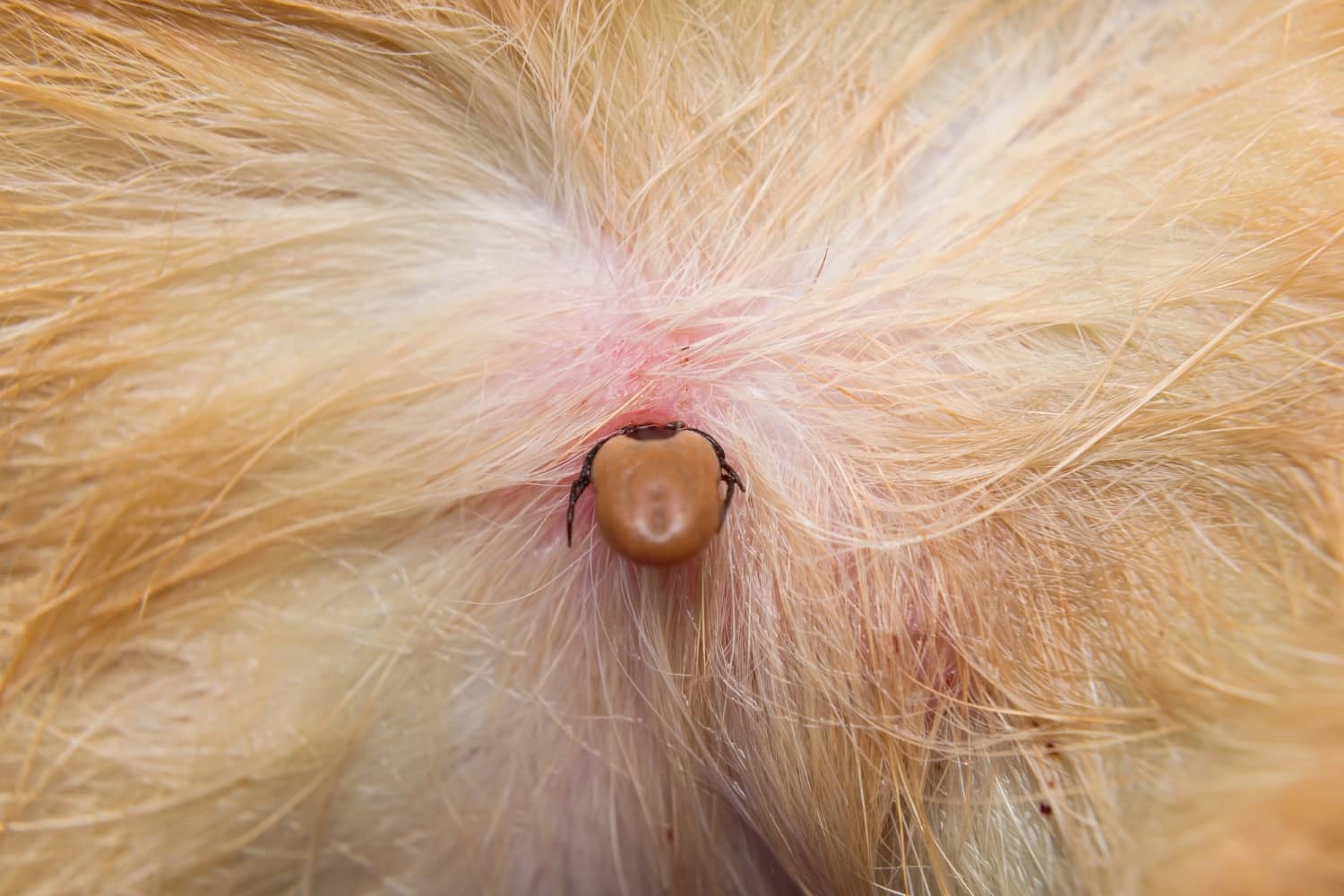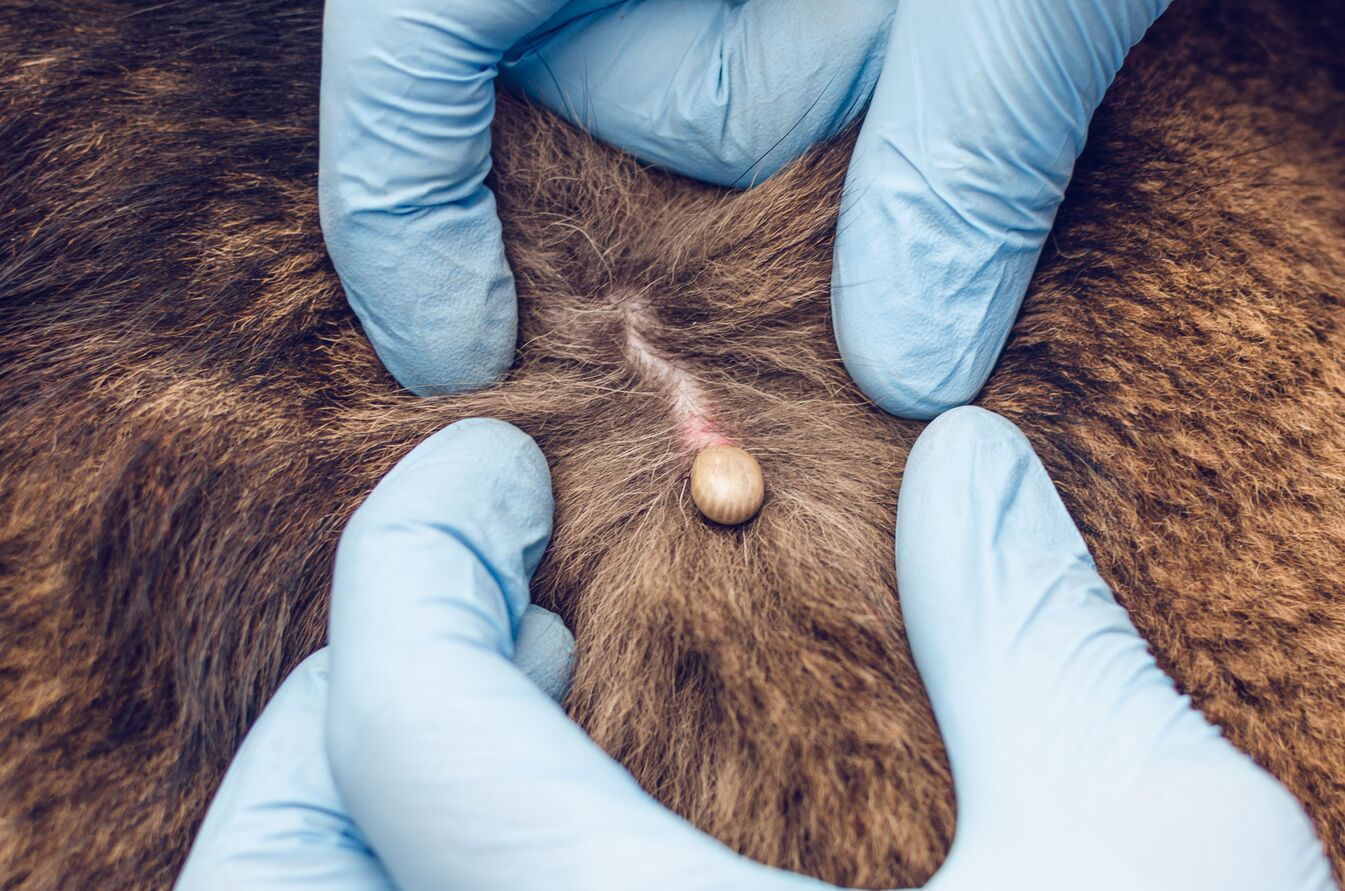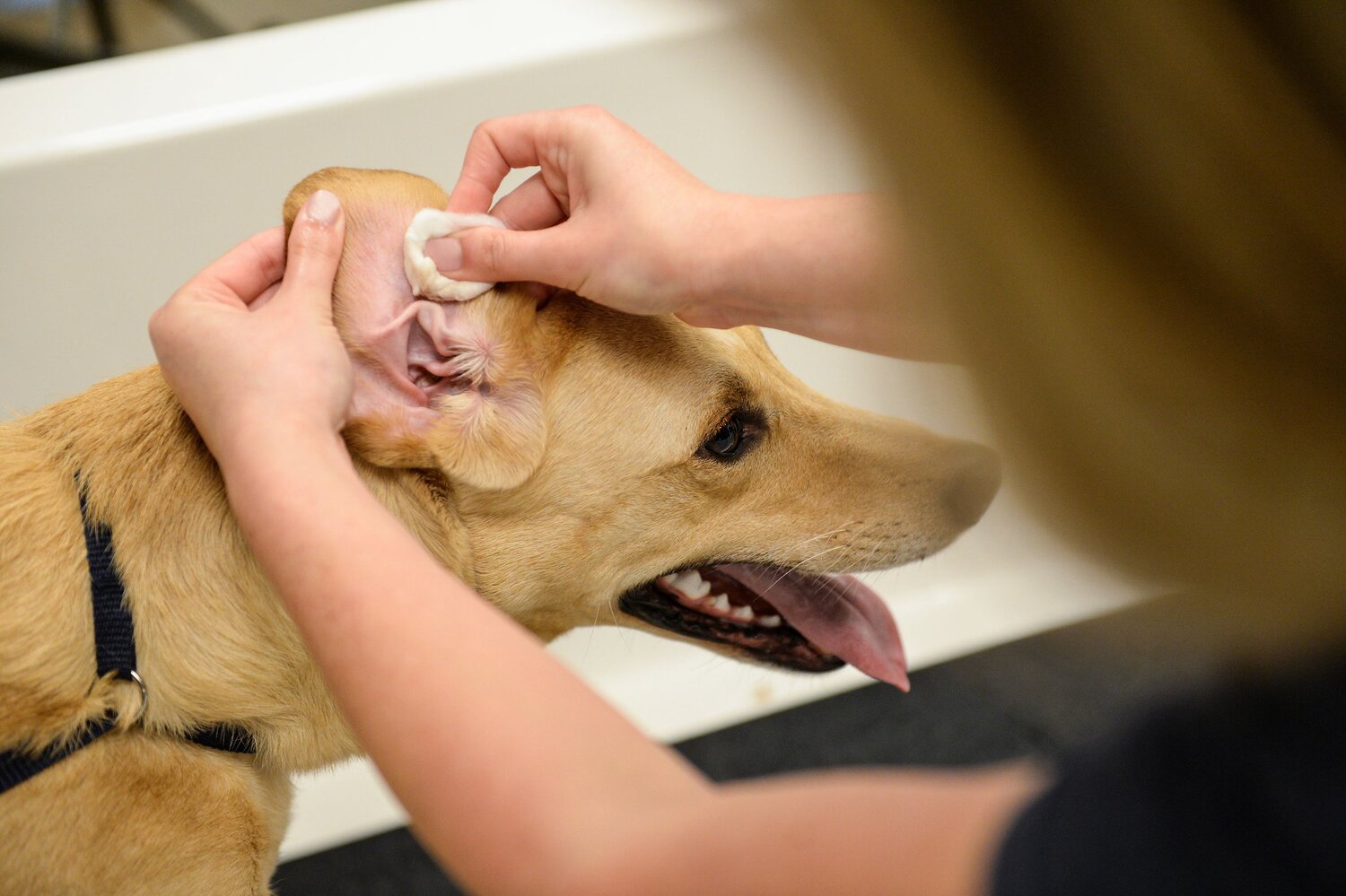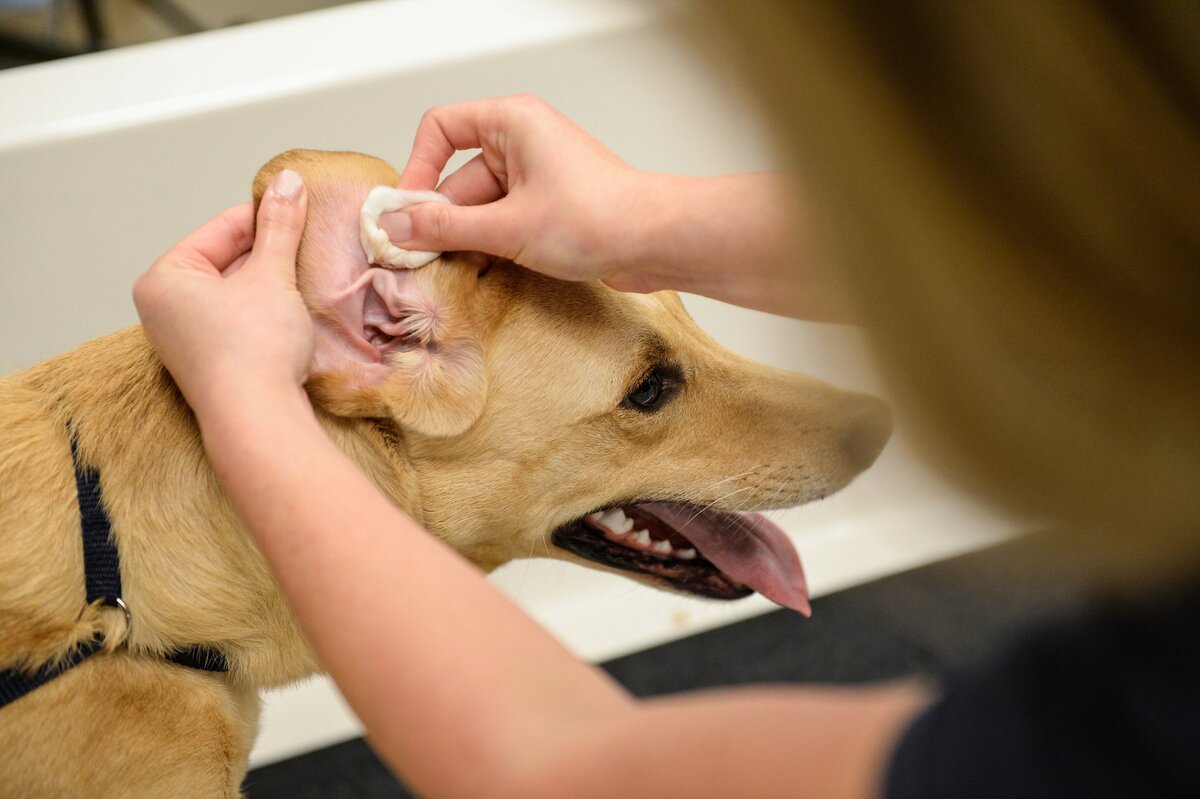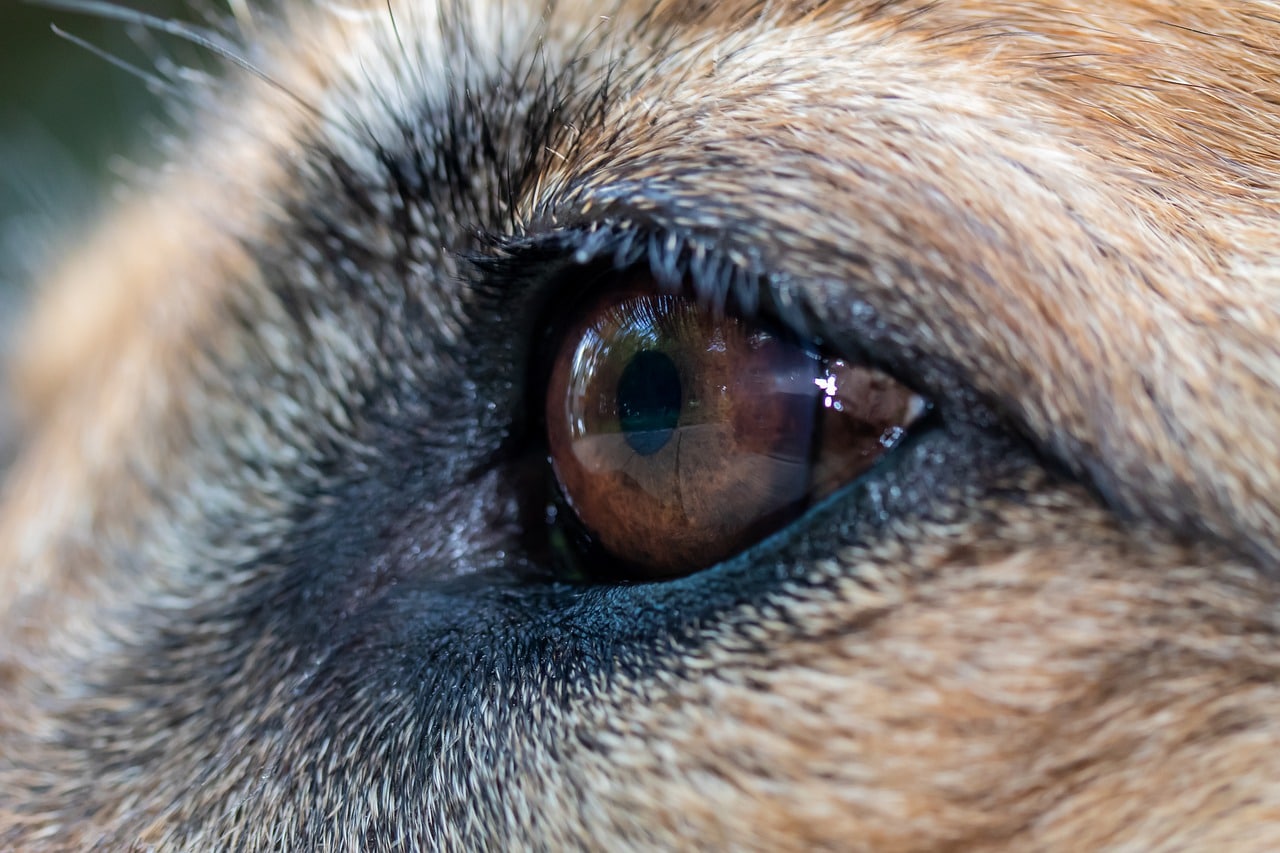Home>Health & Wellness>Common Health Issues>Why Do Ticks Like Dog Ears
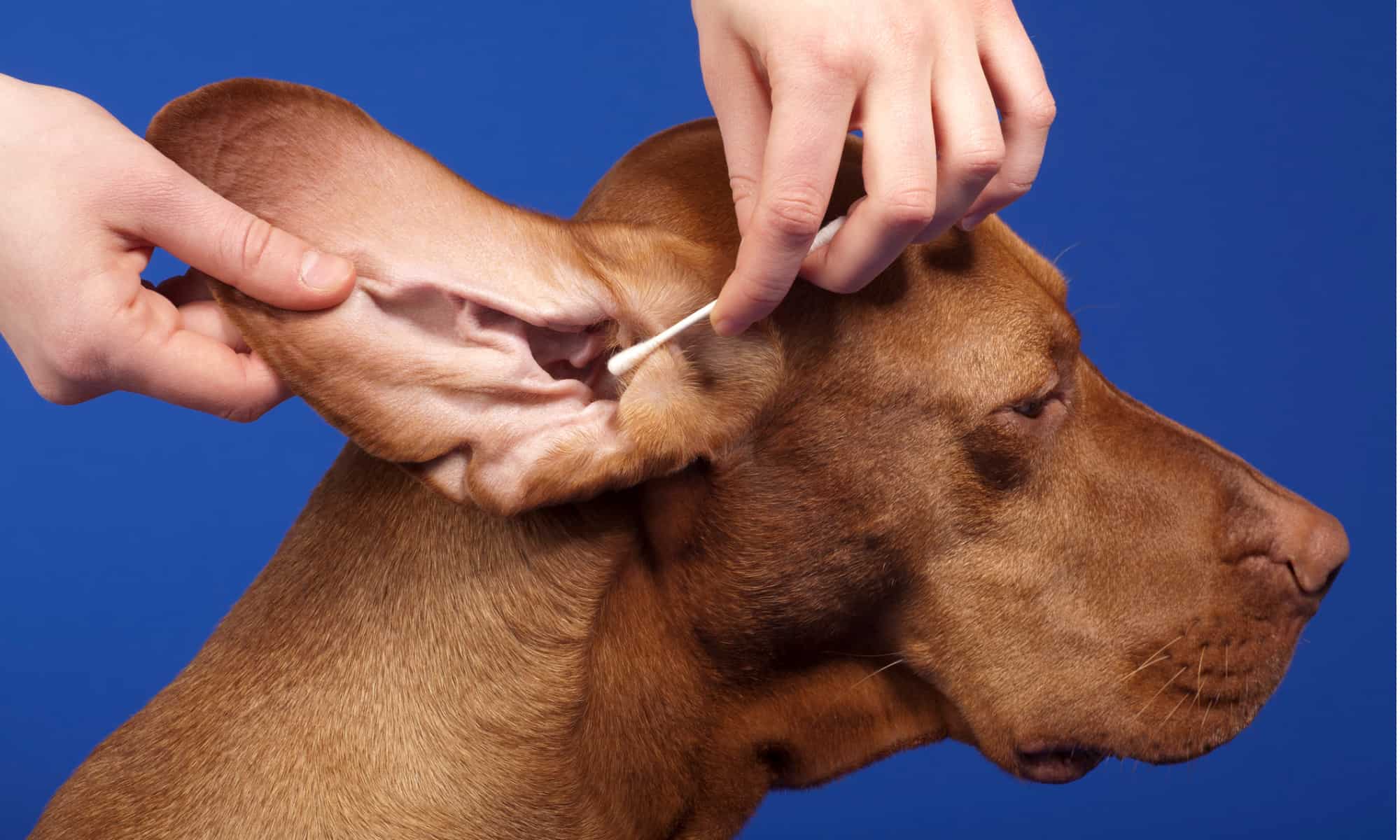

Common Health Issues
Why Do Ticks Like Dog Ears
Published: February 5, 2024
Learn about common health issues for dogs, including why ticks are attracted to dog ears. Protect your pet's health with our expert tips and advice.
(Many of the links in this article redirect to a specific reviewed product. Your purchase of these products through affiliate links helps to generate commission for Pawsomeoldies.com, at no extra cost. Learn more)
Table of Contents
Introduction
Ticks are tiny, blood-sucking parasites that can cause big problems for our furry friends. These pesky creatures are not only a nuisance but also pose serious health risks to dogs. Understanding why ticks are drawn to certain areas of a dog's body, such as the ears, is crucial in preventing infestations and protecting our canine companions from potential harm.
In this article, we will delve into the intriguing world of ticks and explore the specific allure of dog ears to these tiny pests. By shedding light on the behavior of ticks, the dangers they pose, and effective prevention strategies, we aim to equip dog owners with the knowledge needed to safeguard their pets from these persistent parasites.
So, why do ticks have a penchant for dog ears? Let's embark on a journey to uncover the reasons behind this peculiar attraction and learn how to keep our furry friends safe and tick-free.
Read more: What Do Ticks And Fleas Look Like On Dogs
The Behavior of Ticks
Ticks are fascinating yet troublesome creatures with a unique set of behaviors that contribute to their success as parasites. These arachnids have evolved to thrive in various environments, and their behavior plays a pivotal role in their quest for a blood meal. Understanding the behavior of ticks is essential in devising effective strategies to combat infestations and protect our beloved pets.
-
Questing Behavior: Ticks are not passive creatures waiting for a host to come to them. Instead, they exhibit a behavior known as questing. When questing, ticks perch themselves on the tips of grass blades or other vegetation, extending their front legs and patiently waiting for a potential host to brush against them. This behavior allows ticks to efficiently latch onto passing animals, including dogs, and begin their blood-feeding process.
-
Host Recognition: Ticks possess remarkable sensory abilities that enable them to detect the presence of a suitable host. They are attracted to hosts by a combination of stimuli, including body heat, carbon dioxide, and specific odors emitted by animals. Once a tick identifies a potential host, it quickly latches onto the animal's skin, seeking an ideal feeding site to begin its blood meal.
-
Feeding Behavior: Ticks are ectoparasites, meaning they feed on the external surface of their hosts. To feed, a tick pierces the host's skin with its mouthparts and secretes substances that prevent blood clotting, allowing for a continuous flow of blood. Ticks can feed for extended periods, and during this time, they may transmit harmful pathogens, such as bacteria and viruses, into the host's bloodstream.
-
Survival Adaptations: Ticks have evolved remarkable survival adaptations that enable them to endure harsh conditions and persist in their quest for blood. They can survive for prolonged periods without feeding, allowing them to patiently await suitable hosts. Additionally, ticks are resilient to environmental challenges, including temperature fluctuations and dehydration, further enhancing their ability to thrive in diverse habitats.
By comprehending the behavior of ticks, we gain valuable insights into their strategies for survival and their interactions with potential hosts, such as dogs. This knowledge forms the foundation for implementing proactive measures to mitigate the risks associated with tick infestations and safeguard the well-being of our canine companions.
The Attraction to Dog Ears
Ticks exhibit a remarkable ability to pinpoint specific areas on a host's body for feeding, and dog ears are among their preferred feeding sites. Several factors contribute to the peculiar attraction of ticks to dog ears, making this region particularly susceptible to infestations.
Warmth and Moisture
Dog ears provide an ideal microenvironment for ticks due to their warmth and moisture. The skin in and around the ears tends to be thinner and more delicate, offering ticks easier access to blood vessels. Moreover, the natural warmth and humidity in this area create a favorable habitat for ticks, promoting their survival and reproductive success. These conditions make dog ears an enticing location for ticks seeking a blood meal and a suitable environment for their continued development.
Limited Grooming Access
Another reason ticks favor dog ears is the limited grooming access that this area offers. Unlike other parts of the body that dogs can readily reach for grooming, such as their paws or back, the ears are relatively inaccessible to thorough self-cleaning. This limited access allows ticks to remain undisturbed while feeding, increasing their chances of completing a blood meal and potentially laying eggs in the vicinity. The sheltered nature of dog ears provides ticks with a secure feeding site, further enhancing their attraction to this region.
Read more: What Do Tick Images On A Dog Look Like
Odor and Secretions
The distinct odor and secretions associated with dog ears play a role in attracting ticks to this area. Dogs produce natural skin secretions and earwax, which can emit odors that are appealing to ticks. These odors, combined with the warmth and moisture present in the ears, create an enticing sensory combination for ticks, drawing them to this specific location on the canine host.
Reduced Visibility
From a tick's perspective, the ears of a dog offer a concealed and protected feeding site. Ticks prefer locations where they can feed discreetly and avoid detection or removal. The anatomy of dog ears, with their intricate folds and crevices, provides ticks with an opportune hiding place, shielding them from external disturbances and increasing their chances of successful feeding and reproduction.
Understanding the factors that contribute to the attraction of ticks to dog ears is crucial for implementing effective preventive measures. By recognizing the appeal of this particular feeding site to ticks, dog owners can take proactive steps to protect their pets from infestations and minimize the associated health risks. Regular inspection, grooming, and targeted preventive treatments can help mitigate the allure of dog ears for ticks, promoting the well-being of canine companions.
This comprehensive understanding of tick behavior and attraction to specific host sites empowers dog owners to make informed decisions and take proactive measures to safeguard their pets from the risks posed by these persistent parasites.
The Dangers of Tick Infestations
Tick infestations pose significant dangers to dogs, encompassing a range of health risks and potential complications. Understanding these dangers is crucial for dog owners to recognize the importance of proactive tick prevention and prompt intervention in the event of infestations.
Transmission of Disease-Causing Pathogens
Ticks are notorious vectors of various disease-causing pathogens, including bacteria, viruses, and parasites. When a tick latches onto a dog and begins feeding, it can transmit these harmful microorganisms into the host's bloodstream. This transmission can lead to the development of serious illnesses, such as Lyme disease, ehrlichiosis, anaplasmosis, Rocky Mountain spotted fever, and babesiosis, among others. These diseases can manifest with a range of symptoms, including fever, lethargy, joint pain, anemia, and in severe cases, organ damage. The potential for multiple pathogens to be transmitted by a single tick bite further amplifies the health risks associated with infestations.
Allergic Reactions and Dermatitis
In addition to transmitting pathogens, tick bites can trigger allergic reactions and dermatological issues in dogs. Some dogs may exhibit hypersensitivity to tick saliva, leading to localized or generalized allergic reactions characterized by itching, redness, swelling, and skin irritation at the bite site. Prolonged exposure to tick infestations can exacerbate these allergic responses, causing discomfort and distress for affected dogs. Furthermore, the presence of ticks in the ears can lead to otitis externa, an inflammatory condition of the external ear canal, resulting in pain, discharge, and potential complications if left untreated.
Anemia and Blood Loss
Ticks are voracious blood feeders, and severe infestations can lead to significant blood loss in dogs, potentially resulting in anemia. Anemia, characterized by a decrease in red blood cell count and hemoglobin levels, can lead to weakness, fatigue, pale mucous membranes, and cardiovascular strain. Puppies and small-breed dogs are particularly vulnerable to the effects of blood loss from tick infestations, emphasizing the importance of prompt detection and removal of ticks to prevent these detrimental consequences.
Secondary Infections and Tick-Related Complications
The act of a tick attaching and feeding on a dog's skin can create an entry point for secondary bacterial infections. Additionally, if a tick is not promptly and properly removed, its mouthparts may break off and remain embedded in the skin, leading to localized inflammation and the potential for secondary complications. Furthermore, the presence of ticks in the ears can disrupt the normal physiological environment, predisposing dogs to ear infections and related complications, necessitating veterinary intervention and treatment.
By comprehensively understanding the dangers posed by tick infestations, dog owners can prioritize preventive measures and swift intervention to protect their pets from these potential health hazards. Proactive tick control, regular grooming and inspection, and prompt removal of ticks are essential components of responsible pet care, mitigating the risks associated with tick infestations and promoting the well-being of canine companions.
Preventing Tick Infestations in Dog Ears
Preventing tick infestations in dog ears is a crucial aspect of responsible pet care, aiming to safeguard canine companions from the potential health risks associated with tick bites and infestations. Implementing targeted preventive measures and proactive strategies can significantly reduce the likelihood of ticks latching onto and feeding in the ears of dogs, promoting their well-being and minimizing the risks posed by these persistent parasites.
Regular Inspection and Grooming
Regular inspection of a dog's ears is paramount in detecting and removing ticks before they have the opportunity to feed and potentially transmit pathogens. During grooming sessions, dog owners should pay close attention to the ears, carefully examining the skin and the areas around the ear canal for any signs of tick infestation. Using a fine-toothed comb or a specialized tick removal tool can aid in the thorough inspection and safe removal of ticks from the ears.
Tick Control Products
Utilizing vet-recommended tick control products, such as spot-on treatments, collars, or oral medications, can effectively deter ticks from infesting a dog's ears and other areas of the body. These products are designed to repel ticks and prevent them from attaching to the host, providing an additional layer of defense against infestations. Dog owners should consult with their veterinarian to select the most suitable tick control products based on their pet's individual needs and lifestyle.
Environmental Management
Maintaining a well-groomed and tick-safe environment can contribute to preventing tick infestations in dog ears. Regularly mowing the lawn, clearing tall grass and brush, and minimizing exposure to tick-prone areas can reduce the likelihood of dogs picking up ticks during outdoor activities. Additionally, creating barriers, such as gravel or wood chip borders, between wooded areas and the yard can help minimize the entry of ticks into the immediate surroundings of the home.
Protective Measures During Outdoor Activities
When venturing into natural or wooded areas where ticks are prevalent, taking proactive measures to protect dogs can significantly reduce the risk of tick infestations in their ears. Outfitting dogs with tick-repellent clothing, such as vests or bandanas treated with permethrin, and using veterinarian-approved tick repellents can provide added protection during outdoor excursions. After outdoor activities, promptly inspecting and grooming dogs to remove any ticks can further mitigate the risk of infestations.
Read more: Where Do Fleas Like To Be On Dogs
Veterinary Guidance and Preventive Care
Seeking guidance from a veterinarian and adhering to a comprehensive preventive care plan tailored to the specific needs of the dog is essential in preventing tick infestations. Veterinarians can recommend appropriate preventive measures, such as vaccinations and regular parasite screenings, to fortify the dog's defenses against tick-borne diseases and minimize the risk of infestations. Additionally, scheduling routine wellness exams allows veterinarians to assess the dog's overall health and well-being, addressing any potential concerns related to tick exposure and infestations.
By diligently implementing these preventive measures, dog owners can significantly reduce the risk of tick infestations in their pet's ears, promoting a safe and healthy environment for their beloved canine companions. Proactive tick prevention not only safeguards dogs from the potential health hazards associated with tick infestations but also fosters a nurturing and protective bond between pets and their caregivers.
Conclusion
In conclusion, the peculiar attraction of ticks to dog ears stems from a combination of factors, including warmth, moisture, limited grooming access, distinctive odors, and reduced visibility. Understanding the allure of dog ears to ticks provides valuable insights for dog owners, empowering them to implement targeted preventive measures and proactive strategies to protect their pets from infestations and the associated health risks.
The dangers posed by tick infestations in dog ears encompass a spectrum of health risks, ranging from the transmission of disease-causing pathogens to allergic reactions, anemia, and potential complications. This comprehensive understanding of the risks underscores the importance of vigilant tick prevention and prompt intervention to mitigate the potential harm to canine companions.
By prioritizing preventive measures, such as regular inspection and grooming, the use of vet-recommended tick control products, environmental management, and protective measures during outdoor activities, dog owners can significantly reduce the likelihood of tick infestations in their pet's ears. Seeking guidance from veterinarians and adhering to a comprehensive preventive care plan tailored to the specific needs of the dog further reinforces the protective measures against tick-borne diseases and infestations.
Ultimately, the proactive prevention of tick infestations in dog ears not only safeguards the well-being of canine companions but also fosters a nurturing and protective bond between pets and their caregivers. By arming themselves with knowledge and implementing effective preventive strategies, dog owners can create a safe and tick-free environment for their beloved pets, ensuring that they can enjoy a healthy and vibrant life free from the perils of tick infestations.

